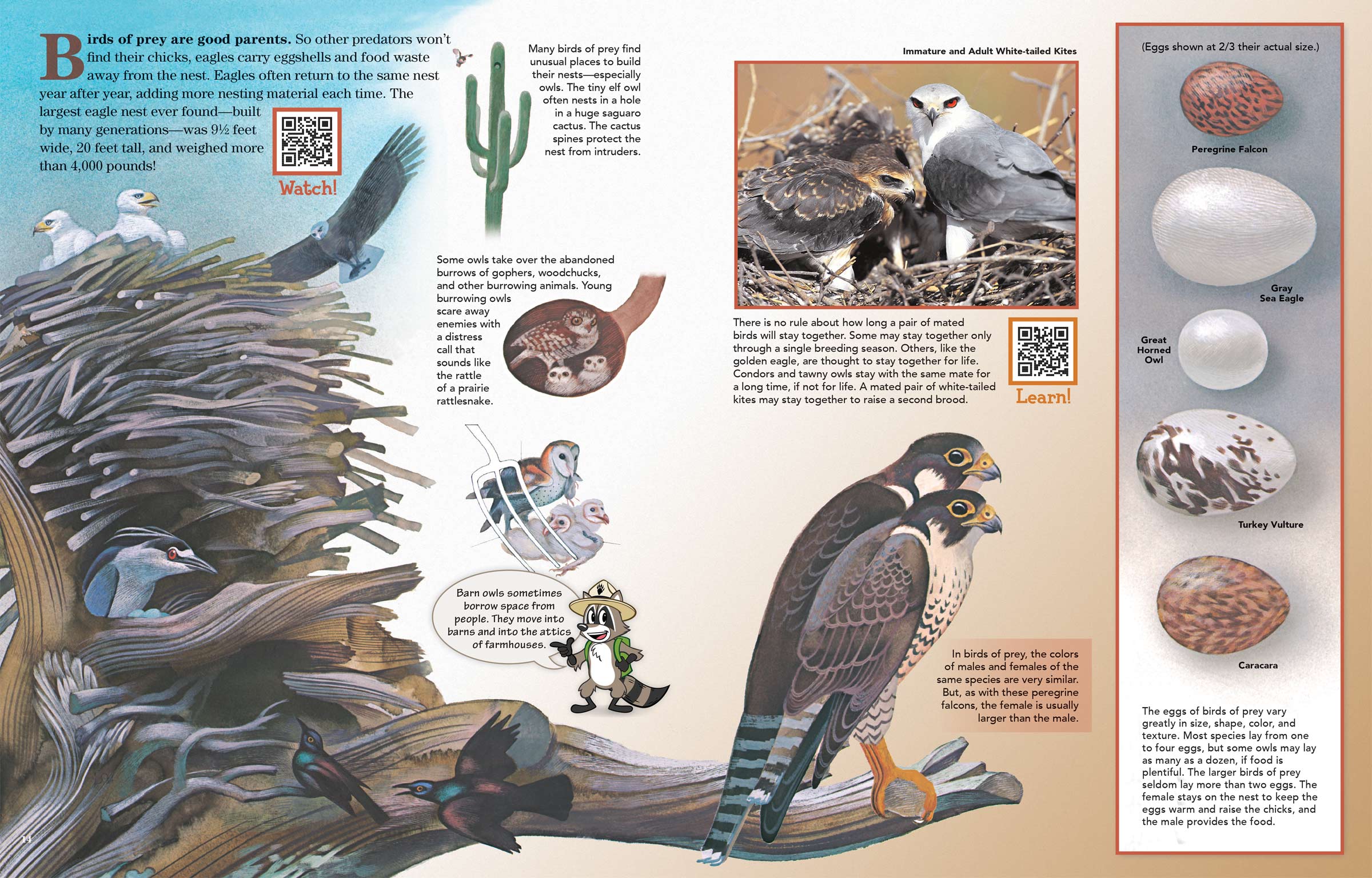
Good Parents
ByBirds of prey are good parents. So other predators won’t find their chicks, eagles carry eggshells and food waste away from the nest. Eagles often return to the same nest year after year, adding more nesting material each time. The largest eagle nest ever found—built by many generations—was 9½ feet wide, 20 feet tall, and weighed more than 4,000 pounds!
Many birds of prey find unusual places to build their nests—especially owls. The tiny elf owl often nests in a hole in a huge saguaro cactus. The cactus spines protect the nest from intruders.
Some owls take over the abandoned burrows of gophers, woodchucks, and other burrowing animals. Young burrowing owls scare away enemies with a distress call that sounds like the rattle of a prairie rattlesnake.
 Barn owls sometimes borrow space from people. They move into barns and into the attics of farmhouses.
Barn owls sometimes borrow space from people. They move into barns and into the attics of farmhouses.
There is no rule about how long a pair of mated birds will stay together. Some may stay together only through a single breeding season. Others, like the golden eagle, are thought to stay together for life. Condors and tawny owls stay with the same mate for a long time, if not for life. A mated pair of white-tailed kites may stay together to raise a second brood.
In birds of prey, the colors of males and females of the same species are very similar. But, as with these peregrine falcons, the female is usually larger than the male.
PEREGRINE FALCON
GRAY SEA EAGLE
GREAT HORNED OWL
TURKEY VULTURE
CARACARA
The eggs of birds of prey vary greatly in size, shape, color, and texture. Most species lay from one to four eggs, but some owls may lay as many as a dozen, if food is plentiful. The larger birds of prey seldom lay more than two eggs. The female stays on the nest to keep the eggs warm and raise the chicks, and the male provides the food.

